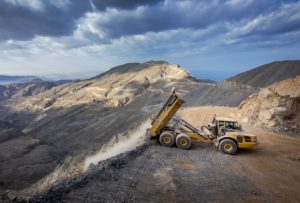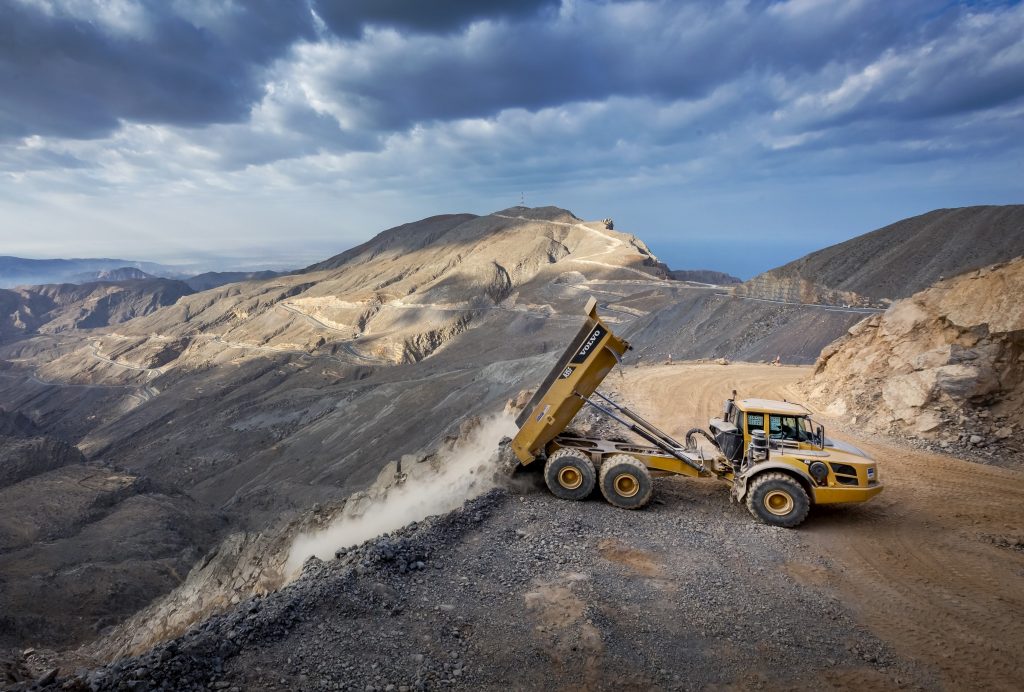A 10-year project to reach the highest point in the UAE enters the final straight.
Its taken more than a decade to build but finally the summit of Jebel Jais is within sight. In October 2014, the government of Ras Al Khaimah (RAK) opened a 30km stretch of a road that snakes its way towards the highest point in the UAE, at 1,900 metres above sea level, near the border with Oman. The road, which for now stops 6km short of the mountain top, has already become a magnet for day trippers, sightseers and car enthusiasts, keen to test their machines and their wits on one of the most fun-to-drive surfaces in the world. In fact a Youtube search reveals that a number of prestigious car makers have already chosen the scenic route as a filming location to showcase their brands. Its perfectly paved surfaces and smooth hairpin curves allow drivers to put a vehicle safely through its paces while drinking in the incredible view as they ascend or descend the mountain. Without a doubt the road is up there with Jebel Hafeet, near Al Ain in Abu Dhabi as the best in the country and some have already placed it among the best driving roads in the world.
Initially the road is flat and follows the harmony of the wadis. For the first 12km there is just  one lane in either direction but once the road begins its ascent it widens into two lanes going up, allowing more powerful vehicles to overtake slower ones. Once you get to the top and have spent some time taking in the breathtaking views, which stretch as far as the RAK coastline on a clear day, the only way down the mountain is to do a U-turn and go back the way you came. So whats the rationale for building a road to nowhere, so to speak? Well, partly, the RAK government decided to build the road to provide access to the area for economic reasons, for example to access a quarry to produce aggregate for the construction trade. But the main reason was to reach the highest point in the UAE and create a new tourist destination that is unique in the country. While all emirates in the UAE have developed tourist infrastructure along their coastlines and to a lesser extent in the desert, this part of the country offers something different because of the mountains.
one lane in either direction but once the road begins its ascent it widens into two lanes going up, allowing more powerful vehicles to overtake slower ones. Once you get to the top and have spent some time taking in the breathtaking views, which stretch as far as the RAK coastline on a clear day, the only way down the mountain is to do a U-turn and go back the way you came. So whats the rationale for building a road to nowhere, so to speak? Well, partly, the RAK government decided to build the road to provide access to the area for economic reasons, for example to access a quarry to produce aggregate for the construction trade. But the main reason was to reach the highest point in the UAE and create a new tourist destination that is unique in the country. While all emirates in the UAE have developed tourist infrastructure along their coastlines and to a lesser extent in the desert, this part of the country offers something different because of the mountains.
A trip up Jebel Jais can provide respite during the sweltering summer months, with temperatures as much as 10 degrees cooler than at sea level. But there is little sense in ploughing huge sums (around $82mn to date) into building a road to the top of a mountain just to admire the view – there has to eventually be a return on that substantial investment. The road opens a whole new part of the country to economic development and signs of this are already in evidence within sight of the route, where a number of standalone villas have been built. There are plans to eventually develop a high end resort near the summit of the mountain as well as a cable car to provide an alternative means to access the summit. RAK also has its sights on becoming the adventure tourism capital of the UAE, with plans unveiled this year to build the worlds longest zip line at 2.6kms. There has even been talk of a ski resort on the mountain.
The final stretch
But none of this can really happen until the road is complete. Its construction has been a long and arduous process that began all the way back in 2005, but contractor General Mechanic Company is now working to complete the final 6km which it expects to handover in March 2017, barely six months from now. For project manager Yaghoub Alipour Vaezi, who has been on site since 2008, that milestone will mark the culmination of over 10 years of hard work. The construction timeline has been protracted by one or two hiccups along the way, though that is only to be expected of a complex project that is a first for the UAE.
Until the main stretch of road opened two years ago this part of RAK was completely inaccessible due to the rocky terrain, Mr Alipour explains. For the first site visit they had to use a helicopter because the only alternative would have been to walk 36kms in the heat. Local people could drive for just 4kms of the route in a 4×4 but there was no public road. Accessing the site was a huge challenge for the consultants who first surveyed the road and that difficulty led to a miscalculation in the amount of excavation that needed to be done, resulting in delays. Further delays were caused by local landowners refusing permission to cut the road through their land, which forced the contractor to change the route. The combination of these two factors meant that the volume of excavation doubled from the initial estimates. To date between 5.3 and 5.5 million cubic metres of material has been excavate from the site and that is expected to rise above 6 million cubic metres by the end of the project.
Making your way up the winding route towards the end of the paved section of the road, the mind can barely comprehend how the contractor has managed to build the project. Once you pass the barrier that marks the end of the completed 30km section of the road, you get a much better sense of how they go about it and the challenges they have faced. Still under construction, this part of the route is unpaved and much narrower, without concrete barriers to prevent a vehicle from going over the edge and tumbling down the mountain.
Unlike many construction projects, building a mountain road is not very labour intensive. At its peak there were around 300 workers on site which has now been reduced to just 150. The real work is done by machines but just getting the breakers and excavators up the mountain is a perilous challenge. Accessing the site requires powerful trucks with the ability to safely manage the very steep gradients of the access tracks.
We had to have safe and reliable machines on the project, says Mr Alipour. Mostly we used Volvo machinery because of their after sale services and because they are available in both Dubai and RAK. Other brands we would have had to call them from Dubai for repair work. We had a Volvo roller, dump trucks, six wheel trucks, different sized of excavators, even 70 t, loader and breaker. FAMCO is equipped to do this faster than others.
Another challenge is the climate which is very different from the base of the mountain. There is fog almost every day in the cold season, which can delay work by hours until visibility improves enough to safely move vehicles and machinery. Heavy rainfall and floods are not uncommon on the mountain which can produce treacherous conditions to work in, especially as the mountain is made up of a mixture limestone and soft clay. A severe downpour has the ability to destroy a half built road meaning the contractor has to start all over again. It also raises the risk of damage to rock faces carved out of the mountain, which in some cases can be as high as 71 metres. As cutting tends to happen from above while filling and rolling is done below, rainfall can result in rocks falling onto areas where work is going on. In fact rockfall is a perpetual threat as excavation is initially done by blasting which can destabilise a whole area. The more risky rock faces are stabilised by gritting and bolting to protect it from rainfall.
Visiting the site, it is clear the end is within sight. With a basic track now leading almost to the top of the mountain, all that remains is to widen the passage with more cutting and filling before the road can be constructed. This involves a 15cm thick sub base overlaid by a 15cm road base topped by a layer of asphalt. Once the whole road is done and walls are stabilised, a second layer of asphalt will be laid to the entire 36km route to provide a quality finish. And with that Mr Alipour can finally hand over the result of almost a decades worth of work.

